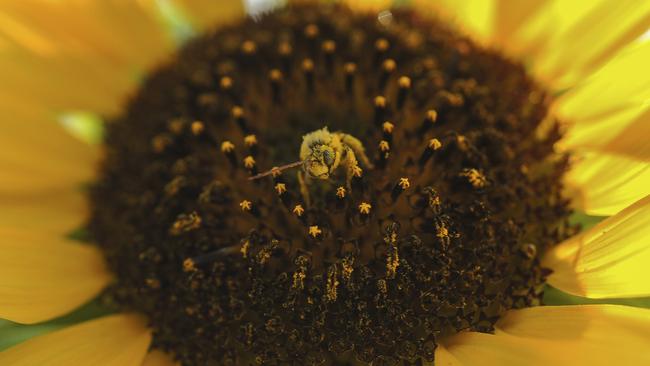Rooting for each other: how sunflowers work together
Sunflowers have demonstrated the kind of collaborative behaviour once believed to be restricted to the animal kingdom.

The natural world is sometimes portrayed as a vicious gladiatorial arena in which only the fittest, most selfish specimens survive.
Not so for the sunflower: a study has shown that the plants co-operate below the surface, sharing nutrients and demonstrating the kind of collaborative behaviour once believed to be restricted to the animal kingdom.
The research looked at how the common sunflower, Helianthus annuus, deploys its roots to forage for sources of nutrition. Each plant has a main tap root off which smaller, hairy tributaries grow. Unsurprisingly, a lone plant will send out more of these secondary roots when it encounters a patch of nutrient-rich soil.
This behaviour changes when it has a neighbour that is as well placed to benefit from the same fertile patch. In such cases, each sunflower sends out fewer roots, as if they have agreed not to compete. Declining to fight for nutrients, they effectively share resources.
The paper, which is published in Proceedings of the Royal Society B, suggests that each plant is responding to its “social environment”. Sunflowers, in other words, seem to demonstrate a kind of vegetative egalitarianism.
The paper joins a growing body of research hinting that no plant is an island. “We need to recognise that plants not only sense whether it’s light or dark or if they’ve been touched, but also whom they are interacting with,” Susan Dudley, a plant evolutionary ecologist at McMaster University in Hamilton, Canada, told Science in January.
Much of the research has involved looking at whether plants treat other members of the same species differently, depending on how closely they are related. For instance, scientists in China found that rice plants did better when they were growing alongside their “kin”, a phenomenon that might be used to boost agricultural yields.
Another study, involving arabidopsis, a family of small weeds often used in research, appeared to have found another form of co-operation. Jorge Casal, a plant biologist at the University of Buenos Aires, noticed arabidopsis plants growing next to close relatives shifted the arrangement of their leaves to avoid placing them in the shade.
They did not do this when the neighbouring plants were not close relatives. How they can know whether they are surrounded by kin remains a mystery.
Scientists have also found communities of plants that emit warning signals to each other. When a giraffe eats an acacia, for instance, the tree begins to pump out ethylene gas. When the surrounding trees pick this up, they transfer unpleasant-tasting tannins into their leaves.
Perhaps the most striking examples of arboreal collaboration occur, like the sunflower’s teamwork, underground. There is a growing evidence that trees can “talk” to each other through the medium of fungi. Research into this “underground social network”, or “woodwide web”, began in the 1990s when it was discovered that fungi sent out superfine threads known as hyphae that weave into tree roots. This creates what has been described as “an interface through which molecular transmission might occur”.
The system allows the roots of trees of different species to share resources and issue warnings about, for example, harmful parasites in the area.
The Times



To join the conversation, please log in. Don't have an account? Register
Join the conversation, you are commenting as Logout